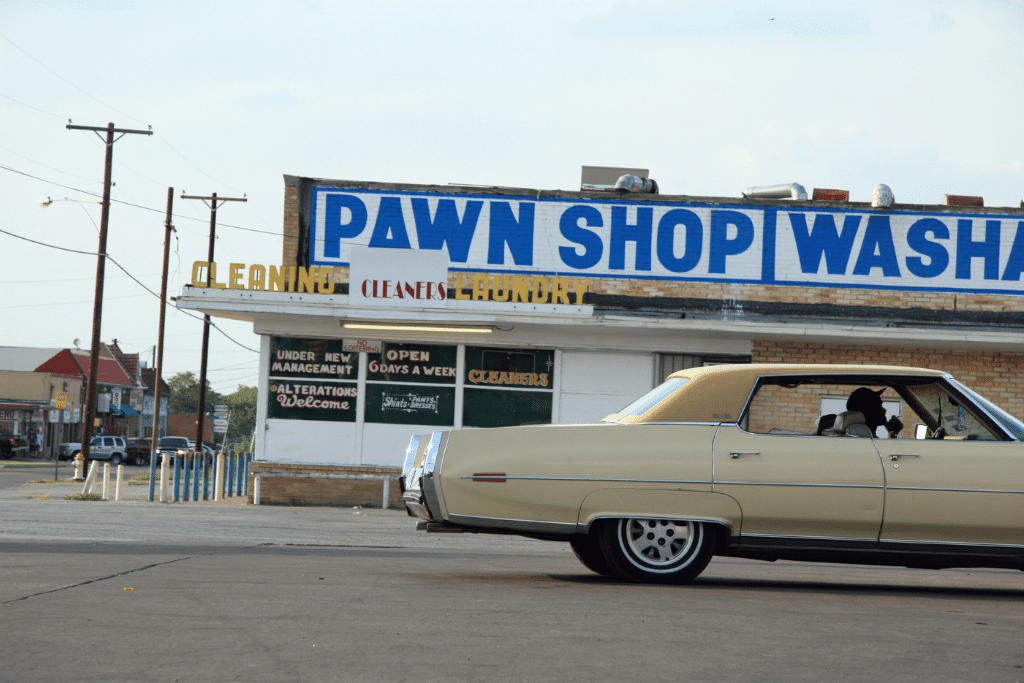The Basics—What Is a Pawn Shop and How Does It Work?
A pawn shop is a business that offers secured loans using personal items as collateral. It’s a straightforward trade: Bring something valuable—jewelry, electronics, tools—and get cash based on its worth. You can take a loan and repay it to reclaim your item, or sell it outright and walk away. It’s a system that’s been around forever, still drawing people who need funds fast.
Here’s how it goes: You hand over your item, the pawnbroker appraises it, and they offer a loan—usually 25-60% of the item’s resale value. You’ll get a ticket with the loan amount, interest rate, and repayment timeline—typically 30 to 90 days, depending on state laws. Repay with interest, and your item’s yours again. Don’t repay? They keep it and sell it. No credit checks, no debt collectors—just a direct deal.
The catch? Interest rates can climb to 10-25% per month in many states. That’s steeper than most loans or credit cards. Knowing these basics helps you sidestep financial traps and pick options that keep you in control.
Step-by-Step—What Happens When You Visit a Pawn Shop?
Thinking about stepping into a pawn shop? Here’s the process, step by step, so you’re ready for what’s ahead.
Step 1: Item Valuation
The pawnbroker inspects your item—say, a watch or laptop—checking its condition, brand, and market demand. Jewelry often holds strong value, while outdated tech can lose its edge quickly. They’re gauging resale potential, not sentimental worth.
Step 2: Loan or Sale Offer
You’ll get an offer: a loan (with interest) or a buyout price if you’re selling. Loans tend to be lower—think $50-$100 for a $200 necklace. Selling might net more upfront, but you’re parting with the item for good.
Step 3: Terms Agreement
Opt for the loan, and you’ll sign a deal detailing the amount, interest rate, and due date. A $100 loan at 20% monthly interest means $120 due in 30 days. Miss the deadline, and they can sell your item—no exceptions. Extensions might be an option, but they add fees.
Step 4: Reclaiming—or Losing—Your Item
Pay on time, and your stuff comes back. Default, and it’s theirs to sell. Forfeited goods are common when budgets get tight—something to keep in mind.
Pro Tip: Bring ID (it’s required), research your item’s market value online first, and negotiate politely. Preparation pays off.
Request Your Free Consultation
Pros, Cons, and Hidden Costs to Watch For
Pawn shops look simple, but let’s weigh the upsides, downsides, and sneaky extras that can catch you off guard.
Pros:
- Fast Cash: Money in hand within minutes—no forms or credit checks.
- No Debt Risk: Defaulting doesn’t ding your credit; you simply lose the item.
- Flexibility: Handy for emergencies or shedding unused stuff.
Cons:
- High Interest: A 20% monthly rate turns a $100 loan into $240 over a year—tough to beat.
- Risk of Loss: Can’t repay? That heirloom or console or coveted personal treasure is gone.
- Short Terms: 30-90 days vanish fast if you’re stretched thin.
Hidden Costs:
Look out for storage fees, late penalties, or lowball appraisals that pad the shop’s profit. Some slip in a $10 “processing fee” unless you ask. Demand the full cost upfront.
The bottom line? Do the math—a $100 loan at 20% monthly interest costs $20 in 30 days. Could you save that instead? Or find a less costly fix? It’s worth considering.
Alternatives to Pawn Shops for Financial Relief
Pawn shops aren’t your only play. Here are three sharper options, plus a Money Fit angle to keep your finances on track.
Option 1: Sell Online
Skip the middleman—list that guitar on eBay or Craigslist. You’ll likely pocket more than a pawn shop’s offer, no interest or repayment involved. Just account for shipping or meetup effort.
Option 2: Negotiate with Creditors
If bills are the issue, call your creditors. Money Fit’s debt management programs have helped thousands cut interest rates and payments—no pawning needed. It’s a lasting solution over a quick patch.
Option 3: Build an Emergency Fund
Start small—$10 a week grows quietly. It’s not instant, but it beats losing valuables. Open a free savings account and automate it. Small moves now prevent big stress later.
Money Fit Insight: Why gamble your stuff when you can ease debt stress with a plan? Money Fit’s helped countless people swap short-term fixes for real freedom. Local nonprofit credit counseling—often free—is another solid first step.
Your Next Move
Pawn shops deliver fast cash—bring an item, get a loan, repay or let it go. But those high interest rates and tight deadlines? They’re a roll of the dice. With this breakdown, you’ve got the full picture: how they work, the risks, and the alternatives. It’s all about choosing what fits your situation.
You don’t need to stake your valuables on a temporary fix. There’s a clearer path to financial stability. Explore Money Fit’s free tools and debt relief services—reach out for a no-cost consultation today. Take charge, one smart decision at a time.
Frequently Asked Questions About Pawn Shops
How much money can I get from a pawn shop loan?
Pawn shops typically offer loans worth 25-60% of your item’s resale value. For example, a $200 necklace might get you $50-$100, depending on its condition, brand, and market demand. The exact amount varies by shop and item type.
What happens if I can’t repay my pawn shop loan?
If you don’t repay the loan by the due date—usually 30-90 days—the pawn shop keeps your item and sells it. There’s no impact on your credit score, but you’ll lose the item permanently.
Are pawn shop interest rates high?
Yes, interest rates can range from 10-25% per month, depending on state laws. A $100 loan at 20% monthly interest means you’d owe $120 after 30 days, making it a costly option compared to alternatives.








